Spice up your coffee with the spices of life
Flavoured coffees are nothing new. Look around, many companies offer these. Take a look at the ingredients though, you’ll be hard pressed to find out what the coffee actually is, other than arabica. The point is, for most of these products, it’s not really about the coffee, it’s about the flavour combinations. In short, it’s fun.
There’s nothing wrong with flavoured coffee, if you like that sort of thing, but if you want to use the best coffees, particularly single origin, you’ll find it tough to find them flavoured, as it kind of goes against the whole idea of choosing a premium coffee. So, if you want to do this with good coffees, need to make up your own ingredients. However, we’re not suggesting you overload the base coffee you like with a ton of flavourings here, just a few selected spices and herbs that will add that extra dimension to your coffee experience.
And yes, we said ‘spices and herbs’. Spices and herbs can add a distinctive and subtle edge to your drink, complimenting it, harmonising with it. Whereas, we find that flavourings are often over whelming, with the coffee becoming the secondary interest. For CoffeeMad, it’s about the coffee, and spices can add a note of interest without detracting from the main event – the base choice of coffee bean.
Coffee is already a beverage that’s good for your health, so why not compliment it with natural spices that also have their own unique benefits. What could be better, not just enjoy your favourite healthy brew, but also incorporate an additional health kick too, one that you can tailor to help target aspects of your own health. And there’s more; combinations of spices make it possible to create your own flavour profiles unique to you and your pallet. With just a handful of spices, you can change your coffee experience daily or even during the day to suit your mood or circumstances.
We have created an overview of a range of popular and some more obscure spices you might like to consider. We’ve also classified them to fit within four groups that reflect our emphasis on moods.
Vanilla
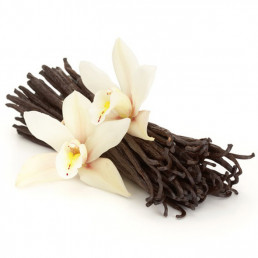
The aroma of vanilla is unmistakable and somewhat intoxicating. With its sweet, perfume aroma, with a slight smokey woodiness to it, It’s one of those spices that when added to others can evoke a festive feel.
When adding it to coffee, you have several ways to do it. Vanilla pods, which can be of the dried variety, vanilla powder or natural vanilla essence. Experiment to see what works best for you.
Vanilla has numerous health benefits too, for instance:
- The aroma of vanilla can have calming effect on adults.
- Vanillin, the active compound in vanilla is considers to be an anti-depressant.
- It has anti-bacterial qualities.
- It’s full of antioxidants.
- It’s loaded with potassium and magnesium, the latter helping with mood.
- It may even help with sleep apnea.
The soothing qualities of vanilla are probably the best reasons to add it to your coffee though.
Cinnamon
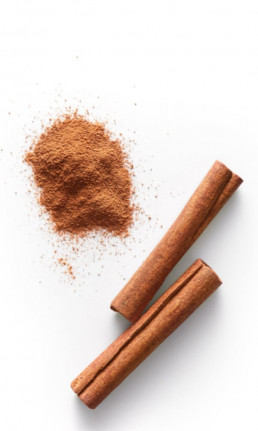
What’s not to like about cinnamon! The mere presence of it can drive you to want to eat cinnamon infused pastries, so why not add it to your coffee too.
Its evocative aroma can easily evoke a festive feel and as such add it to lift your spirits if you’re feeling blue.
Take care though as adding too much can impart a little bitterness to your brew. And make sure you stir in the spice well if adding it as powder. Often the best way is to use an infuser and add the cinnamon (in bark form) along with a couple of other spices and let it sit in the brew for a while.
Luckily for us, cinnamon has numerous reported health benefits too:
- It has anti-viral, anti-bacterial and anti-fungal properties
- It contains antioxidants with associated anti-inflammatory effects
- Gut health may be improved due it containing prebiotic properties
- It may reduce blood pressure.
- It can lower blood sugar levels and therefore the risk of type 2 diabetes
- It’s been noted as helping to relieve digestive discomfort.
- it has anti-cancer properties.
- Widely reported are its beneficial cognitive effects.
- It reduces levels of total cholesterol, “bad” LDL cholesterol and triglycerides, while “good” HDL cholesterol remains stable.
- In a study in mice with Parkinson’s disease, cinnamon helped protect neurons, normalized neurotransmitter levels and improved motor function.
So go ahead, add some cinnamon to your morning brew, raise your spirits and make your day!
Ginger
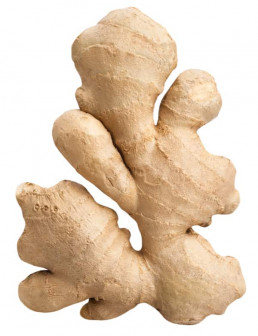
For us at least, adding either a couple of slices of raw cut ginger to your coffee is a no-brainer. The other way to use ginger in your coffee is to steep cut diner in boiling water for n hour and then use the water to make your coffee. If you try this once, you’ll find yourself adding fresh ginger to your weekly shopping on a regular basis.
Ginger adds a spiciness to coffee, a little kick, but without the sharp intensity of a chilli. It’s also quite festive too, especially if you add a few cloves, making your coffee a warming, stimulating drink.
Like many other spices, Ginger has powerful anti-inflammatory, antioxidant and anti-cancer properties. This stems from the active ingredient in the ginger plant called Gingerol. If you’ve had ginger in a drink before or eaten it raw of pickled, you’ll know that it can pack quite a punch, much like a chilli, although it’s an entirely different ‘heat’ sensation.
If you suffer from travel or motion sickness, i.e. nausea, ginger can help. Interestingly too, some studies suggest that ginger consumption can help with weight loss and can significantly reduce blood sugar levels and help mitigate heart disease risk factors. Suffer from osteoarthritis? There are studies that suggest ginger can help reduce the inflammation here too. Lastly, ginger is known to help with improving chronic indigestion, as it helps seed up the emptying of your stomach, the main protagonist in indigestion. Other health benefits may include:
- Lowering cholesterol levels
- Improving brain function
- Protecting against Alzheimer’s
- Kills bacteria and prevents infections, particularly good with oral bacteria responsible for inflammatory gum diseases such as gingivitis and periodontitis.
Chilli

Chilli in your coffee? It certainly raises a few eyebrows. So, you might find it odd for us to include chilli as a spice to incorporate with your favourite brew. It is an odd one for sure, but you’ll be surprised, especially if you like a little sugar in your coffee. Chilli adds a real ‘zing’ to the drink. It goes without saying, you really don’t want to put too much in, just a small pinch of chilli powder is enough.
Chilli, like many of the other pieces we’ve covered, has its own range of health benefits. However, we should point out that it isn’t for everyone, as chilli can be a stomach irritant for some, but in others it can help sooth an upset stomach. Its benefits include suggestions that it could help with cognitive function. It’s been shown to help with improving the metabolism. If you suffer from joint pain, chilli can help alleviate this and fight inflammation. Studies also suggest that chilli can help decreasing the risks of cardiovascular problems and also the risks associated of Type 2 Diabetes. Like many of natures spices and herbs, chilli has it’s own amazing properties to be explored. We simply suggest adding a pinch to your brew when you need a little ‘kick’, because it sure does exactly that!
Black Pepper
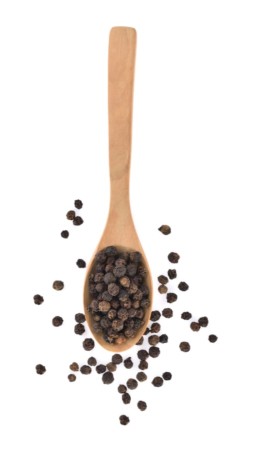
Adding black pepper – preferably freshly ground of course, to your coffee in Starbucks is likely to cause a few turned heads and some muttering. Fear not though, for they don’t understand. Black pepper has many of the same potential health benefit properties as turmeric, as its active ingredient is piperine, which packs a powerful antioxidant, anti-inflammatory punch. Not only that, black pepper is know to aid in the absorption of other key nutrients, including turmeric.
Similar to turmeric, black pepper may help boost your mood, improve your gut bacteria health, offer some pain relief and may help in fighting cancer.
Black pepper also has a curious ability to adjust the taste of some foods, enhancing their own flavour while not overpowering the main flavour as one might expect it would – just try sprinkling some black pepper on a cur strawberry and you’ll see.
So, we advocate adding a little black pepper to your coffee along with the turmeric – that’s certainly get the tongues wagging in your local coffee shop!
Cardamon

Unless you’re used to southeast Asian cooking, cardamoms are probably not in your spice rack. Cardamom has a complex flavour. Some people compare it to all-spice, cinnamon, even cloves. It has a pine-like, somewhat lemony, and fruity aroma to it. Too much can be somewhat astringent. Try adding a few cracked green cardamom pods in your coffee for a surprising lift in flavour and aroma.
In some cultures, cardamom is known as the “queen of spices”, mainly because of its many uses in cuisine and for its medicinal benefits.
In regard to health benefits, cardamom has many anti-oxidants and anti-inflammatory compounds, as well as being naturally anti-bacterial and so may help with:
- Lowering Blood Pressure
- Fighting cancer
- Protect against Chronic Diseases
- Digestive Problems
- Reduce ulcers
- Treating bad breath and preventing cavities
However, as ever, while cardamom may have many beneficial health properties, it’s the flavour we are interested in and how along with a few other species can turn your regular, somewhat dull coffee, into an entirely different experience, at least for those who wish to experiment a bit.
Nutmeg
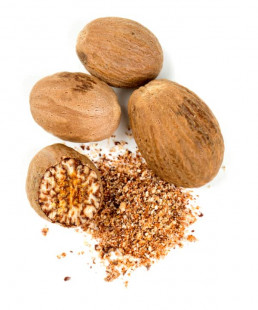
Add nutmeg to your brew and it will take on a warm nutty flavour as well as a hint of the festive season. It can lift the coffee flavour too, as it has both a sweet and savoury edge to it. Just a pinch or two is enough, so don’t over do it.
The savoury note to nutmeg can stimulate your pallet, often helping to enhance the flavour of your coffee.
Nutmeg’s many purported health benefits include the ability to boost cognitive functions, relieve pain, improve blood circulation, soothe indigestion problems, help detoxify the body, promote healthy skin, reduce oral problems, reduce insomnia, and help boost the immune system.
Also try blade mace, for a subtle twist on the nutmeg flavour.
Star Anise

This spice has a very familiar flavour and aroma. It’s one of the main ingredients in Chinese flavourings such as ‘five spice’ powder. It has a strong ‘anise’ flavour and smells similar to liquorice. It’s a ‘pretty’ spice too – star shaped, which gives it its name, but you’ll find it as a ground spice too.
Star anise maybe one of those ‘star’ health foods hiding in plain sight. It’s known for being rich in flavonoids and polyphenolic compounds. These are know to contribute to health benefits. Other beneficial compounds include:
- Linalool
- Quercetin
- Anethole
- Shikimic acid
- Gallic acid
- Limonene
These rich bioactive compounds may offer the beneficial properties of being:
- an antioxidant
- anti-inflammatory
- antimicrobial
Try adding a pinch or two of star anise to your coffee for a surprising change to your morning or afternoon brew.
Urfa Biber
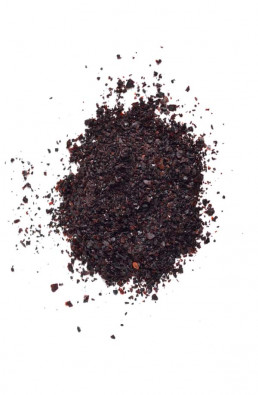
If you are looking for a surprising twist on adding a spice to coffee, look no further than this unusual spice. It’s a chilli taking its name from a town in Turkey renown for growing it – Urfa. But what’s different about this chilli, is that it is almost immediately dried, but not completely – they are allowed to sweat under cover, so they retain their oils. They can then be used in dishes either whole to impart a flavour or as flakes. Urfa Biber has a deep burgundy colour gained by being baked in the natural heat of the sun. They taste amazing, you’ll pick up notes of chocolate, smokiness, (from the intense sun drying), tobacco, raisins and tannins that you might more assuage with wine, and then there’s the chilli ‘heat’, which is quite soft and not over powering. It’s these qualities which we thing make it a surprising and interesting experimental addition to a cup of coffee – go easy though, they’re not very sweet, but they have a lot of depth of flavour.
Health benefits wise, not much to say, except eaten they ar ea rich source of vitamin A &C. As a chilli, it contains capsaicin, which gives chillis their heat and is know for promoting good digestion, helping heart burn and helping burn calories – but perhaps not so much as a pinch added to coffee. An interesting flavour addition addition non-the-less .
Cocoa
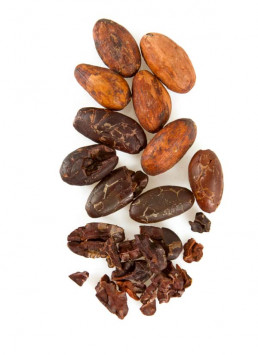
This spice needs little introduction. Add half a teaspoon to your coffee for some added richness and sweetness. Choose your cocoa carefully though. Make sure it’s pure cocoa and not cocoa mikes with additives such as sugar or milk powder. Organic cocoa is a better choice too, since it will have been grown sustainably. Look for the ‘fair trade’ mark too, it’s just as important as that used in the coffee trade.
The main health benefits of cocoa are down to it being rich in phytonutrients which help protect agains fungal and bacterial infections. Cocoa also contains theobromine (also known as xantheose), a bitter alkaloid. The health benefits of this compound may be widespread:
- It’s know to reduce blood pressure and may reduce bad cholesterol.
- Similar in structure to caffeine, it may help increase energy.
- As a stimulant, along with coffee, it may help with short term cognitive function.
- Theobromine may also relax the airways improving respiratory function.
- There’s also wrong evidence for the compound’s anti-inflammatory properties too.
But hey, we’re simply suggesting you add it because chocolate in coffee tastes great, especially if mixed with one or two of the other spices we’ve suggested – cinnamon or cardamon for instance.
Tumeric
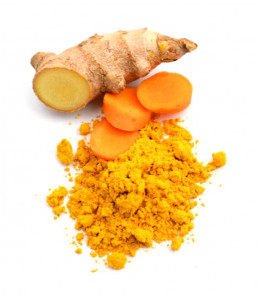
Why on earth would you add a spice like turmeric to coffee? After all, it’s often used in curries to add an earthiness to the flavour and to add its famed golden colour. A poor man’s saffron, is another name used to describe its ability to impart a glorious golden yellow colour to dishes.
So, what’s the benefit to a coffee drinker? Let’s start with flavour. Turmeric imparts a deep ‘earthiness’ to coffee and a hint of bitterness. Just half a teaspoon is enough. It’s a subtle change to the flavour and doesn’t overpower the bean.
However, the greatest benefit is that it is an easy way to introduce regular consumption of what has been hailed by many as a ‘wonder spice’. Turmeric has many reported health benefits, brought about by its active ingredient – curcumin, a natural anti-inflammatory agent, other possible benefits include:
A powerful antioxidant. Along with long term inflammation, oxidation through free radicals are a contributor to heart and cardio vascular disease.
May lower cholesterol. Along with helping to lower cholesterol, it may also help lower triglycerides and improve blood pressure.
For the eyes. Turmeric may help reduce the risk of cataracts, glaucoma, and macular degeneration.
Anti-cancer. Current research shows that turmeric has a disruptive effect on cancer formation along with reducing the spread of cancer and causing the death of cancer cells. For those on chemotherapy, turmeric can help reduce the unpleasant side effects.
Good for the brain. Some research suggests that cur cumin can cross the blood-brain barrier and may help fight against Alzheimers, as it fights against inflammation and plaque build up. There’s also some evidence to suggest that cur cumin can help with lowering depression.
What have you got to loose, give it a try.
Tamarind

Tamarind is another one of those multi-use spices. It has a unique sweet/sour taste. It can be purchased as resinous blocks or powder. Bought as whole pods, even the pod case can be used. Often used in Asian cooking, it can be used for marinades, pickles and chutneys. However, added to your coffee, we are looking for that unique sweet/sour flavour to add a little difference to your daily brew.
As for health benefits, tamarind has played an important part in Asian traditional medicine. Tamarind is chock full of polyphenols, which impart anti-oxidant and anti-inflammatory properties to the spice. So like many other spices, it may help prevent against cardiovascular disease, cancer and diabetes. Traditionally, tamarind has been used as a remedy for constipation, diarrhoea, fever and malaria.
Blade Mace
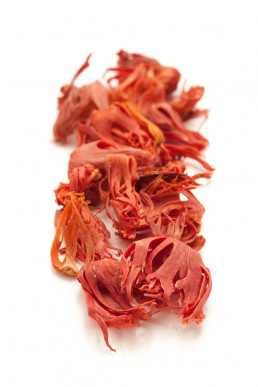
You probably know that mace is the inner, outer covering of the nutmeg seed. Orang/red in colour, it is soft in texture and peels away from the inner nut in blade like strips, hence its name. It has a sweet, warm flavour with a woody edge. It takes on the flavour of the nutmeg, but is much softer and more subtle. As such it can be used in more delicate cuisine. Add some to your coffee for a pleasant spicy kick without the harshness of raw nutmeg, although that too can be quite pleasant depending on your taste buds.
Health wise, many of its purported health benefits are un-proven, but local use in Indonesia, India and other Asian countries prove its popularity in traditional medicine. It is high in vitamin A, vitamin C, iron, calcium, copper, iron, manganese, dietary fiber, B vitamins, and trace amounts of key minerals. Add to that high concentrations of volatile acids and antioxidants which include Myristicin, carotenoids, Linalool, Pinene, Cineole, and Eugenol and one can understand why it is held in high regard in local Asian cultures. In particular, it is used to help relieve conditions such as anxiety, pain relief, fighting cancer, and strengthening the immune system.
However, health benefits aside, it’s the pleasant sweet, and mildly spicy flavour that adds the interest to cup of great coffee that we are more interested in here.
Orange Peel

Rather than try and add a drop of orange juice to your coffee, which would cool it and water it down, try the zest of an orange. Better still, add in some dried orange peel for a nice orangey finish to your brew. Orange peel adds a nice citrusy brightness to your coffee.
Health benefits considered, the orange peel, so often discarded, containers a wealth of beneficial compounds, not forgetting that the peel and pith often contains 3 times as much vitamin c as the orange itself. The peel of an orange contains provitamin A, folate, riboflavin, thiamine, vitamin B6, and calcium. Limonene, which composes almost 90% of the oil in orange peel, is thought to have anti-inflammatory and anti-cancer properties, the latter due to the presence of the polyphenols hesperidin and polymethoxyflavones (PMFs).
Chicory
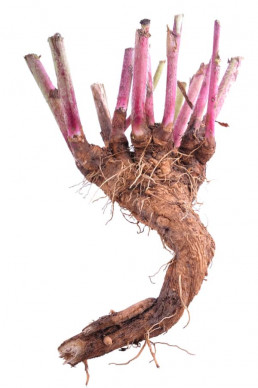
Chicory has been added to coffee commercially to enhance its richness since the 1800’s. It was often used as a substitute to coffee too. It’s probably best know through the brand Camp Coffee, popular through the last century up until the 70’s. Camp was only about 4% coffee, but 25% chicory. This is why many people describe chicory as similar in flavour to ground coffee beans and having a warm, nutty, woody and earthiness about it.
Its health benefits though are often overlooked. Chicory contains the vitamins A & B2 through E and minerals such as magnesium, calcium, and potassium. Another interesting dietary fibre called inulin, which helps support health gut bacteria.
In addition to this it may also help with:
- Lowering blood sugar levels in Type 2 diabetes.
- Fighting cancer through its anti-oxidants
- The fibre content could help reduce cholesterol
- As a vasodilator helping relax blood vessel walls, it could help blood circulation.
Take care though, as chicory is known to cause allergic reactions in some and in cases cause diarrhoea for those sensitive to it.
Lavender
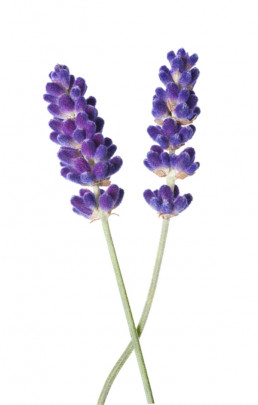
You’re probably more familiar with lavender as an essential oil or a fragrance used in soaps or home vaporisers. As a herb though, it’s quite complex. It tends to impart a powerful floral flavour and aroma. There’s a definite undertone of woodiness, maybe even mint, plus fruity notes, and some smokiness.
Try rolling a sprig of lavender between your hands and adding it to your coffee before you add boiling water. Then, adding the boiling water will release the essential oils from the leaves.
Lavender’s health benefits have been noted by herbalists for centuries. It’s been used to treat a myriad of conditions including:
- anxiety
- insomnia
- depression
- headaches
- hair loss
- nausea
- acne
- toothaches
- skin irritations
- cancer
Cloves

If you want to add a touch of the festive season at any time of the year, just drop a couple of cloves into your brew. Cloves have an aromatic intensity that’s hard to miss, delivering a somewhat sweet, woody and warming tase to what ever its added to. It has a touch of astringency to it to, which can help balance a sweater cup of coffee.
Apart from adding a festive touch to you brew, cloves may have important health benefits too. Cloves are high in antioxidants, most notably, eugenol, which has been shown to be five times more effective at reducing oxidative stress than Vitamin E.
Tests have also shown that compounds in cloves inhibit cancer cell growth and promote cancer cell death.
Cloves have natural anti-bacterial properties too. It’s been known for centuries that cloves help improve oral health as it kills a range of bacteria.
Eugenol may also be beneficial to liver function, reducing inflammation and reducing oxidative stress.
Cloves have show in some studies to assist in reducing blood sugar levels and to help reduce the incidents of stomach ulcers.
So, why not add a couple of cloves or ground cloves to your daily coffee? It will make a pleasantly surprising difference.
Lemon Grass
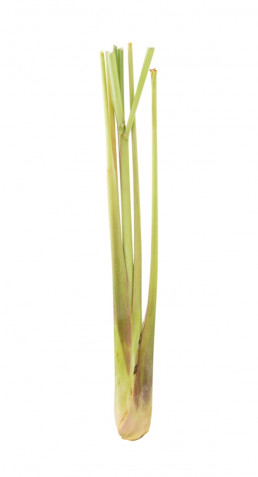
You’ll find lemon grass used in many Asian dishes. And yes, it does taste like lemon, but most notably it’s its lemony fragrance that stands out. You may also detect a hint of mint too.
Add a small piece of crushed lemon grass stem to your coffee, and you’ll lift your coffee experience, adding a brighter lemony floral taste to it. It’s quite refreshing, especially if added to a lighter roasted coffee.
Health benefits? Indeed, lemon grass is a rich source of flavonoids and phenolic compounds, both containing antioxidants. A key compound responsible for this is Quercetin, a flavonoid known for having antioxidant and anti-inflammatory benefits. You may also be surprised to learn that in Africa, lemon grass has been used to treat coronary heart disease.
Banana Extract
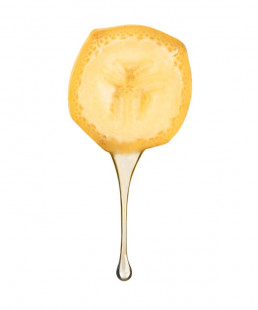
Think ice cream. Think about the choices you have when you can put two or even three scoops if ice cream on a cone. what combinations do you choose? Coffee and chocolate, coffee and mint, coffee and orange? How about coffee and banana – it works for us, how about you?
Bananas can be quite pungent, especially when very ripe. This is because of the ‘esters’ it contains. Similar esters are used to make things like fruit drop boiled sweats. The flavour and aroma imparted by these esters compliment coffee well, adding a soothing quality to your brew. Rather than try and put banana pulp in your coffee, which would be quite messy, use banana extract instead – you’ll only need a few drops to taste though as it is quite concentrated.
As for the heath benefits of bananas, most people are away that it is packed with potassium which helps recovery after workouts. However, bananas also contains a variety of bioactive antioxidant compounds including phenolics, carotenoids, biogenic amines and phytosterols. The nutrients in bananas can also help moderate blood sugar levels, but it’s the antioxidants in them that probably provide the most benefit.
Liquorice
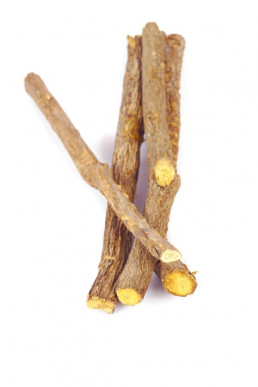
Adding this spice to your coffee adds a unique twist to the flavour and a smooth richness too. It’s not for everyone, but worth a try as it is similar in flavour to anise or aniseed. Don’t be fooled in to thinking you can just drop a liquorice sweet into your coffee either, as these are often full of artificial flavours and also contain anise or aniseed to boost the liquorice effect. Seek-out black liquorice root or powder and add a small pinch or two to your brew to try.
The chemical that gives liquorice its flavour is called glycyrrhizic acid, which is not without some negative side effects if consumed too much, as when over consumed, it can upset the balance of electrolytes in your body, raining heart beats, blood pressure and and causing muscle pain. However, don’t over concern yourself too much as consumed in small quantities, there’s little threat.
That said, black liquorice does have reported health benefits, imparted by active compounds such as glycyrrhizin (despite its drawbacks), licoricidin, and liquiritin. These are reported as fighting bacteria, inflammation, high cholesterol and even cancer.
